
Discover average hydroseeding cost, key price factors, and ways to save. Get transparent estimates for your lawn project and make informed decisions for your home.
You don't have to live with a yellow lawn


Several environmental conditions can turn grass yellow.
Yellow grass is often the result of repairable conditions.
Nutrient deficiencies in the soil are fixable by reversing the situation.
Fungus and pests are common sources of yellow grass.
Proper lawn maintenance can reduce occurrences of yellowing grass.
Wondering why your grass is turning yellow? Yellow spots on your lawn may indicate that action is necessary to return your grass to a healthy condition. Then again, yellowing lawn spots may be perfectly normal.
Either way, diagnosing the problem that's killing your lawn, or determining that there's no trouble at all, can tell you how to remedy the situation and get you back to enjoying your lawn worry-free. For help pinpointing the issue, consult a local lawn treatment service to get an expert opinion.
Watering the grass is the most fundamental task in keeping your lawn healthy. Although your lawn can suffer from having too little water, too much can be even worse. Patches or large areas of grass that turn pale and start to yellow while displaying a thinning appearance are signs that it needs more water. On the other hand, a lawn that receives too much water will turn yellow because of other causes that result from overwatering.
Repairing your too-dry lawn is a simple fix. Watering your lawn more frequently will quickly reverse the condition. Although the yellow grass blades won't become green again, new, more lively-looking grass will replace them quickly.
Lawns with damage from overwatering likely have other issues that need resolution, too. Overwatering dilutes the nutrients in the soil and leaves the grass weak and prone to fungus, lawn pests, and weeds. Allow the lawn to dry out and address the remaining issues to return your yard to a green state. A simple fix is to install a sprinkler system that you can program to water your lawn at regular intervals.
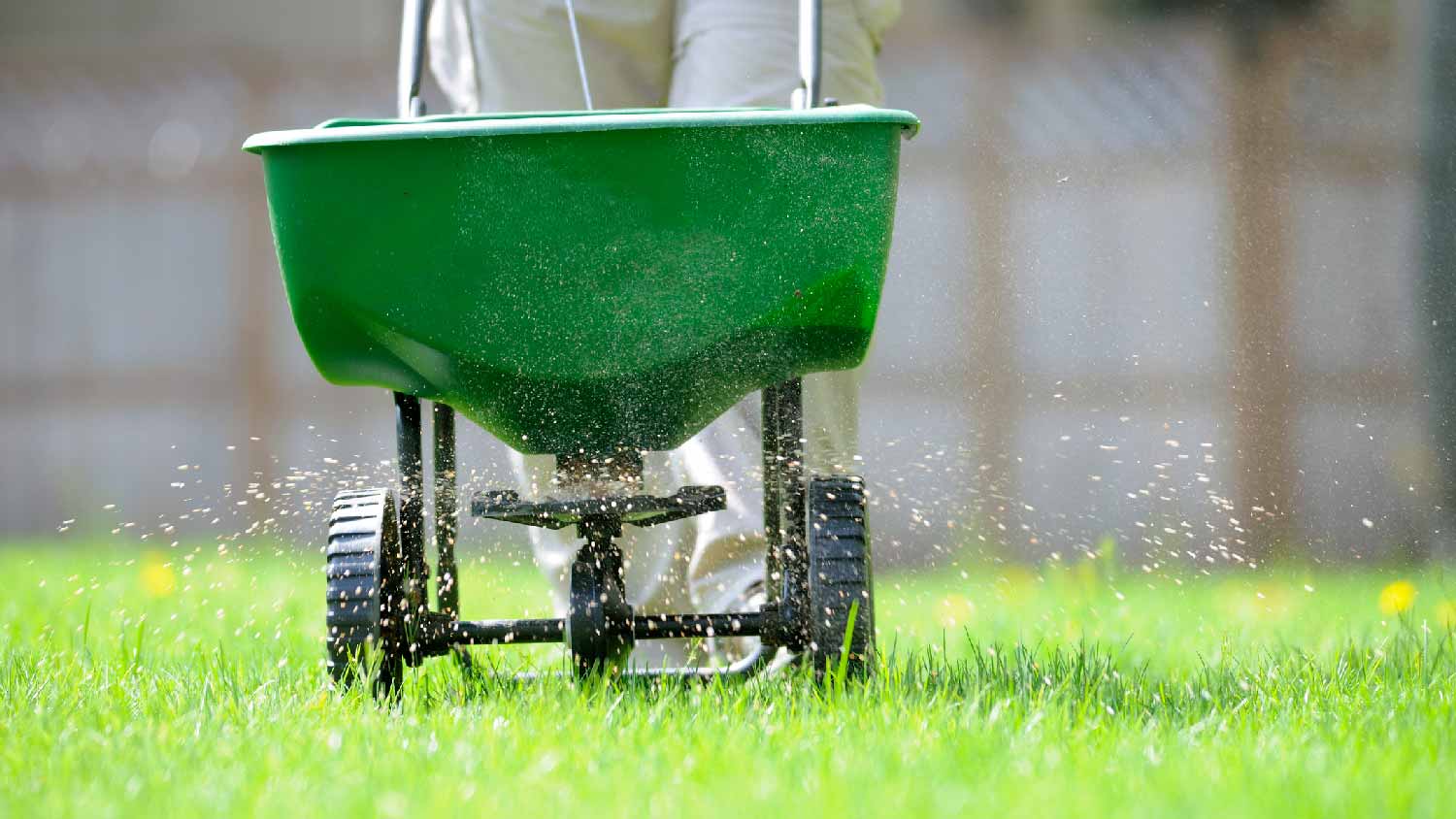
Your lawn needs the right mix of nutrients to keep it healthy. If you add too much lawn fertilizer, your grass can develop yellow or brown tips, wilt easily without water present, and start to look thinner. Too many nutrients, specifically nitrogen, and your lawn can become 'burned.' The affected areas will turn yellow and brown and perish in severe cases.
If your grass is undernourished, apply a nitrogen-rich fertilizer designed to revive your lawn at your earliest convenience and establish a feeding schedule for your yard.
Repairing an over-fertilized lawn can be more challenging. If you have only minor damage, slightly overwatering your yard for a few days to dilute excess nitrogen will likely help the grass heal itself. Severe cases may require you to rake and remove the dead and dying grass and reseed your yard. To reduce the chances of over or under-feeding your lawn, carefully follow the directions and recommendations for the fertilizer you choose.
Small patches of yellow and dying grass surrounded by seemingly healthy, bright-green blades are typically memories, etched in the grass, of your dog relieving themself in that location. Dog urine kills grass because it contains nitrogen and can over-fertilize spots in your yard.
Unfortunately, the only way to repair the dead spots is to reseed your lawn, specifically the affected areas. To keep new spots from forming while still allowing your dog to wander free in the yard, follow closely behind with a garden hose and immediately saturate the area they choose to use as a restroom to dilute the new nitrogen.
For more convenient prevention of dog spots, you can encourage your pet to relieve themselves in a designated area, adjust the amount of fertilizer you apply to that part of the lawn, or slightly overwater your yard if it can support the extra moisture without causing other damage.
Poor soil conditions is a general term that means the soil isn't, or is no longer, ideal for growing grass. Lawn areas with heavy foot traffic or too much water can compact over time and limit strong grass root growth, causing lawn yellowing and thinning. Inadequate nutrient supply in the soil causes damage that appears similar. If soil is too acidic, many grasses will turn yellow in response.
How you repair your poor soil conditions depends on what kind of soil problem exists. Compacted soil is repairable by aerating your lawn, reseeding, and developing a regular aeration schedule if the area is still subject to heavy use.
Determining what nutrients are lacking in your soil can be tricky. Test your soil to determine what nutrients you need to add and how to adjust the pH level to keep your lawn in top shape. Then, hire a local lawn treatment service to provide the advanced services necessary to restore your soil and lawn to its former condition.
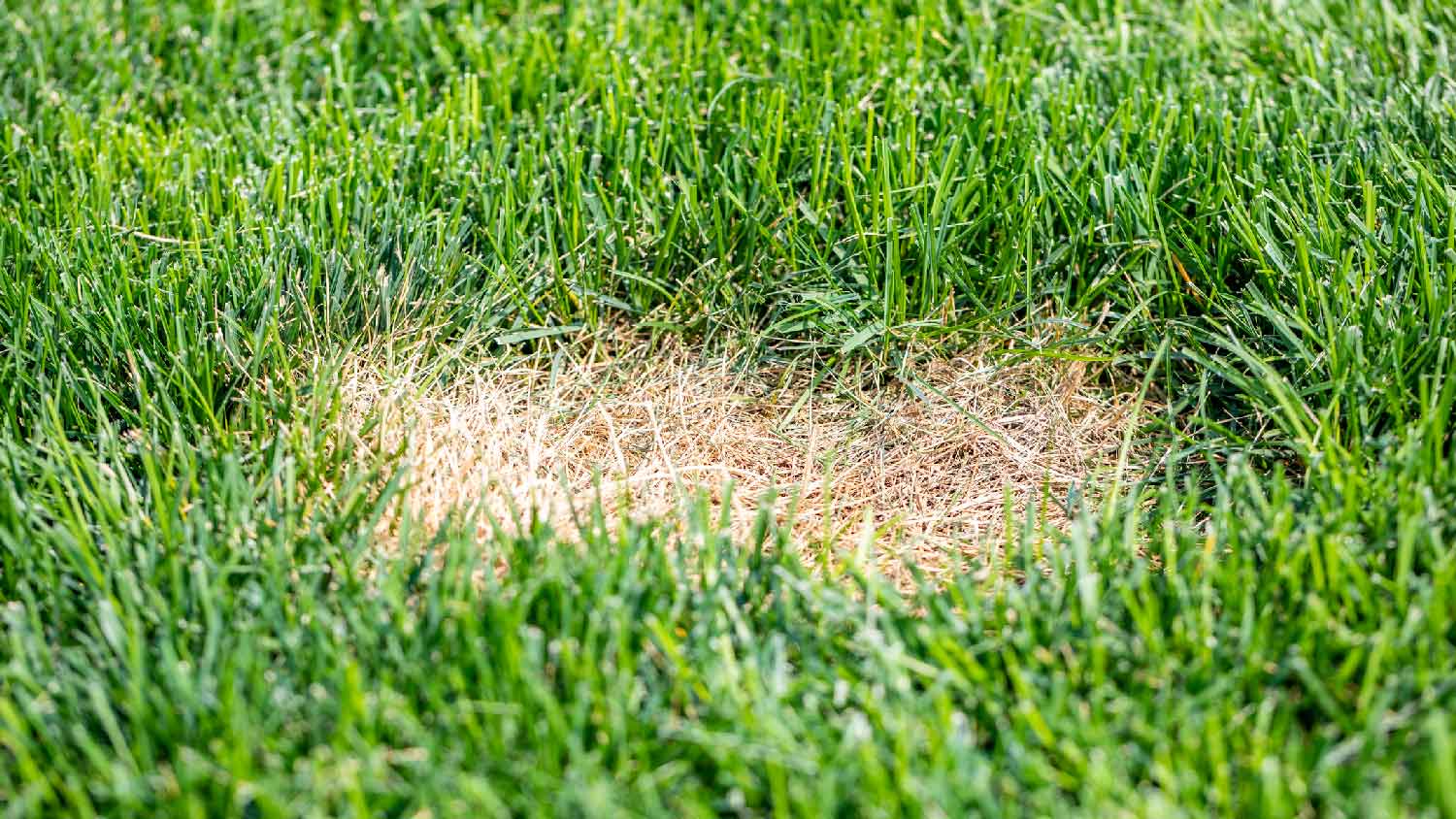
Lawn fungus and disease are more common than you might think. They come in various forms, with names like fairy circles, yellow spot, rust, blight, and dollar spot. Some of them are treatable and preventable, while others aren't. Luckily, rust and fairy rings are easily identifiable by their telltale signatures of rusty blades or circles of oddly-colored grass. Often, diseases start in a single, small location and spread.
If you can identify the type of fungus damaging your yard, you may be able to find a fungicide that can remedy the situation in the short term. A more long-term solution is to prevent fungus growth by following a lawn care maintenance checklist each season that includes aeration and consistent watering.
Grubs, cutworms, leatherjackets, webworms, and more make up the army of pests that can damage your lawn in chunks or as a whole. Yellowing and sometimes dead spots are the result of this common lawn problem. These pests are typically insect larvae that feed on the roots of your grass. Sometimes you can see the critters within or under the lawn thatch.
Identification is key to treating an infestation. Once you determine what kind of insect larvae your lawn is harboring, finding the applicable pesticide at your lawn care or home center is simple. However, better ways to handle the situation include hiring a professional lawn care company to address and prevent larvae from returning or following a proper lawn care schedule.
It's true: How we maintain our lawnmowers can affect the health of our yards. Dull blades or blades with extensive damage on a lawnmower breaks and crushes the grass tips instead of neatly trimming each one. You can identify the trouble by noticing dead and dried-out cut ends of grass that may split open, leaving them ripe for other problems and diseases. As long as we're talking lawn tool maintenance—dripping oil from a leaking mower can also create dead spots in your yard.
Sharpening your lawn mower blades, either as a DIY project or by taking your mower to a local lawn mower repair pro, will immediately stop the damage from worsening. To speed the healing, consider adding nitrogen-rich fertilizer if it's been a while since the last feeding.
To avoid future damage, sharpen your lawn mower blades every 25 to 30 mowing hours, raise the cutting deck to about three inches to leave enough grass behind to promote healing, and avoid mowing during excessively hot or dry weather.
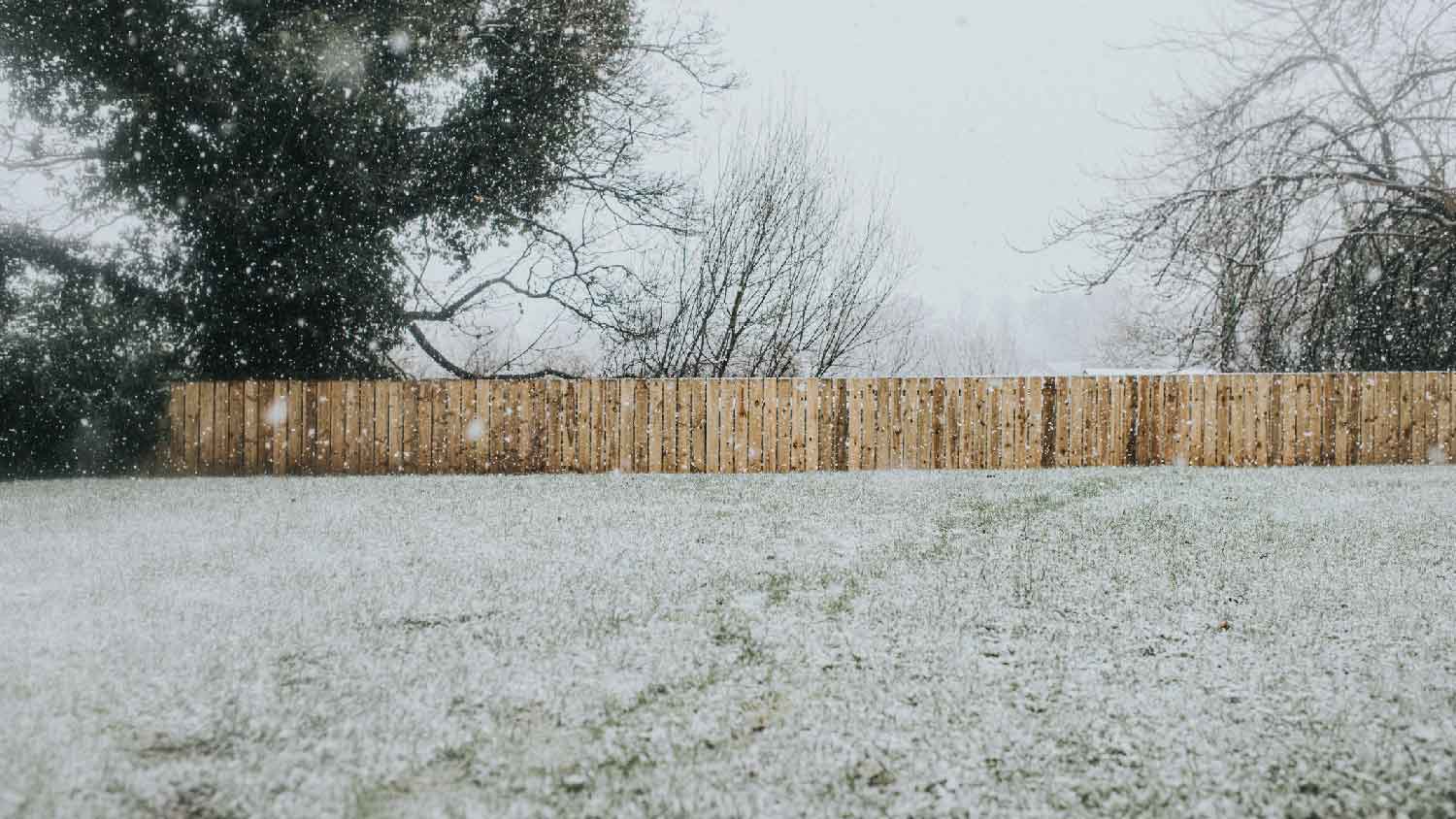
Even in moderate climates, but especially in cold locations, your lawn may go dormant and turn pale green or yellow during cold weather. It can appear to dry out and may look thin during this time.
A dormant lawn requires little care, and you can essentially ignore it until it begins growing again. Avoid overwatering and mowing your lawn during this time. Avoid walking on grass with frost on its surface to keep from breaking the fragile blades.
When grass bakes in the sun, it doesn’t always turn a burnt brown. Many grass species will turn yellow from the heat as they dry out and their healthy cells are damaged.
Direct sunlight can cause heat damage during the height of summer, especially if your lawn isn’t adequately watered. But heat damage can have other causes, too. If you accidentally leave a tarp or plastic cover over the grass on a summer day, you may find that the grass underneath died after only a few hours. Thick coverings can trap heat against the grass, quickly rising temperatures and killing the part of the lawn underneath. Awkward yellow sections often result.
Never leave heavy coverings on your lawn for more than several minutes at a time, especially during the summer. Keep your lawn well irrigated in the hot months.
Some grass species, including rough bluegrass and fescue, have no problem with shade and even thrive in it. But many lawn-friendly grass species don’t grow well in the shade. If the grass is surrounded by trees, rooftops, and fences, it may not get the hours of sunlight it needs, causing grass to die, often yellowing as it goes.
Always research the type of grass species that will work best in your yard before buying sod or planting seeds. Match the grass to your climate and the shade level of your backyard. It’s worth keeping an eye on the lawn during the weekend and estimating how many hours of sun it gets.
While grass can suffer from over-fertilization, there’s a more insidious killer: Accidental chemical runoff. Two common causes include salt and de-icer runoff that soaks into the ground during the winter and ruins the borders of lawns in spring, and chlorinated pool water splashed on grass from nearby pools or hot tubs. However, other types of runoff from exterior painting and construction can cause similar effects. In these cases, borders and splotches on the lawn will turn yellow.
Always be wary of runoff that soaks directly into your lawn, and avoid it when possible. Avoid the use of harsh chemicals near or on the lawn.
This technical-sounding term means that grass isn’t getting enough iron to produce chlorophyll, leading to yellowing and lawn death. Some fertilizers can help, but not all lawn fertilizers include iron, and certain grass species may be more vulnerable than others. Iron chlorosis is more likely in acidic soils, over-watered soil, and compacted soil that starves plants of nutrients. This problem is more common in southwestern regions of the United States.
Test your soil’s iron levels and provide the right fertilizer for the grass. Aerate your lawn on a regular schedule, and avoid overwatering in between lawn services.
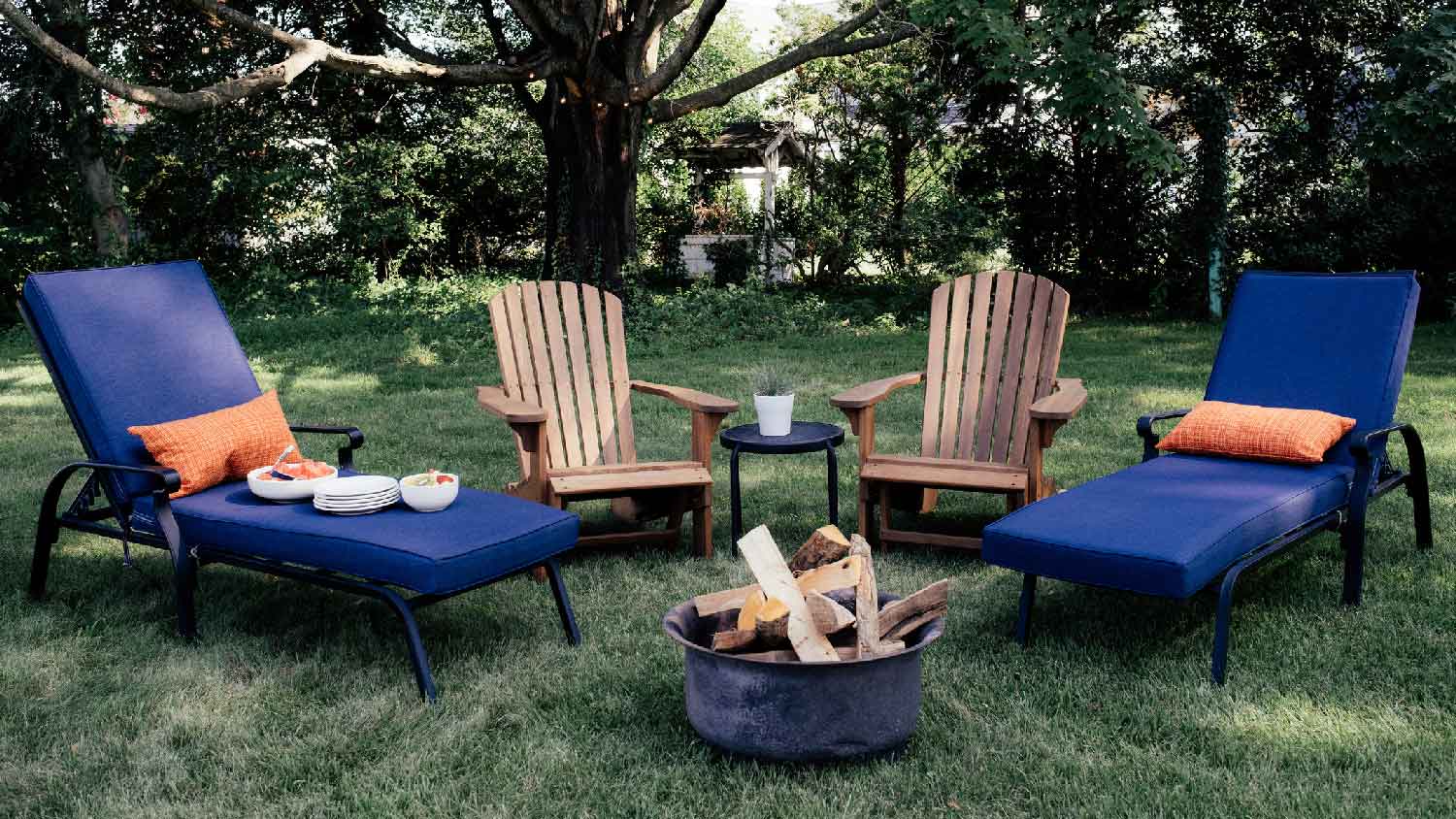
Even if your home’s location doesn’t experience very hot summers, objects that block the lawn from the sun can cause long-term problems. This grass killer happens most often with things that sit on the lawn for several weeks, including lawn chairs, inflatable pools, larger toys, and more. It can also happen if your yard gets a heavy cover of leaves in the fall and the leaves clump and linger through spring.
Remove objects from the lawn after you finish using them. Remove thick leaf layers in a timely manner for healthy spring growth.
Grass species thrive at different lengths. Not all grasses will thrive at short lengths, like one inch high. If the grass can’t attain enough growth to absorb necessary sunlight, it may start to yellow and fade over time.
Research your grass species and the best height to keep it healthy. The recommended grass height for most species is two to three inches tall, but some varieties, like Bermuda grass, require a shorter cut.
It can be alarming to see grass starting to yellow during spring when most grass species hit a healthy, green growth spurt. But it’s not uncommon, especially in wetter climates. Over the winter, grass tends to go dormant and other competitive plants can start to creep in. Invasive, non-native species, mosses, and weeds can grow into grass, competing for resources. If they’re significantly stronger than grass at the start of spring, the lawn may starve for nutrients, resulting in yellowed grass around the newcomers.
Keep your lawn healthy and well-maintained to avoid competitors encroaching. Use lawn feed and fertilizers that encourage your grass while killing weeds and moss. Look for treatments for removing weedy intruders, usually with the description “moss and fungus control” or similar words. Aerate your lawn regularly so your grass can maintain strong growth.
From average costs to expert advice, get all the answers you need to get your job done.

Discover average hydroseeding cost, key price factors, and ways to save. Get transparent estimates for your lawn project and make informed decisions for your home.

Get transparent power seeding cost info to learn what impacts pricing, how to save, and whether to DIY or hire a pro for your lawn’s best results.

Discover the cost to fertilize your lawn, including average prices, key factors, and tips to help homeowners budget for a lush, healthy yard.

Brown patches on your lawn may occur for several reasons, including lack of sunlight and overfertilization. Learn how to treat and prevent patches.
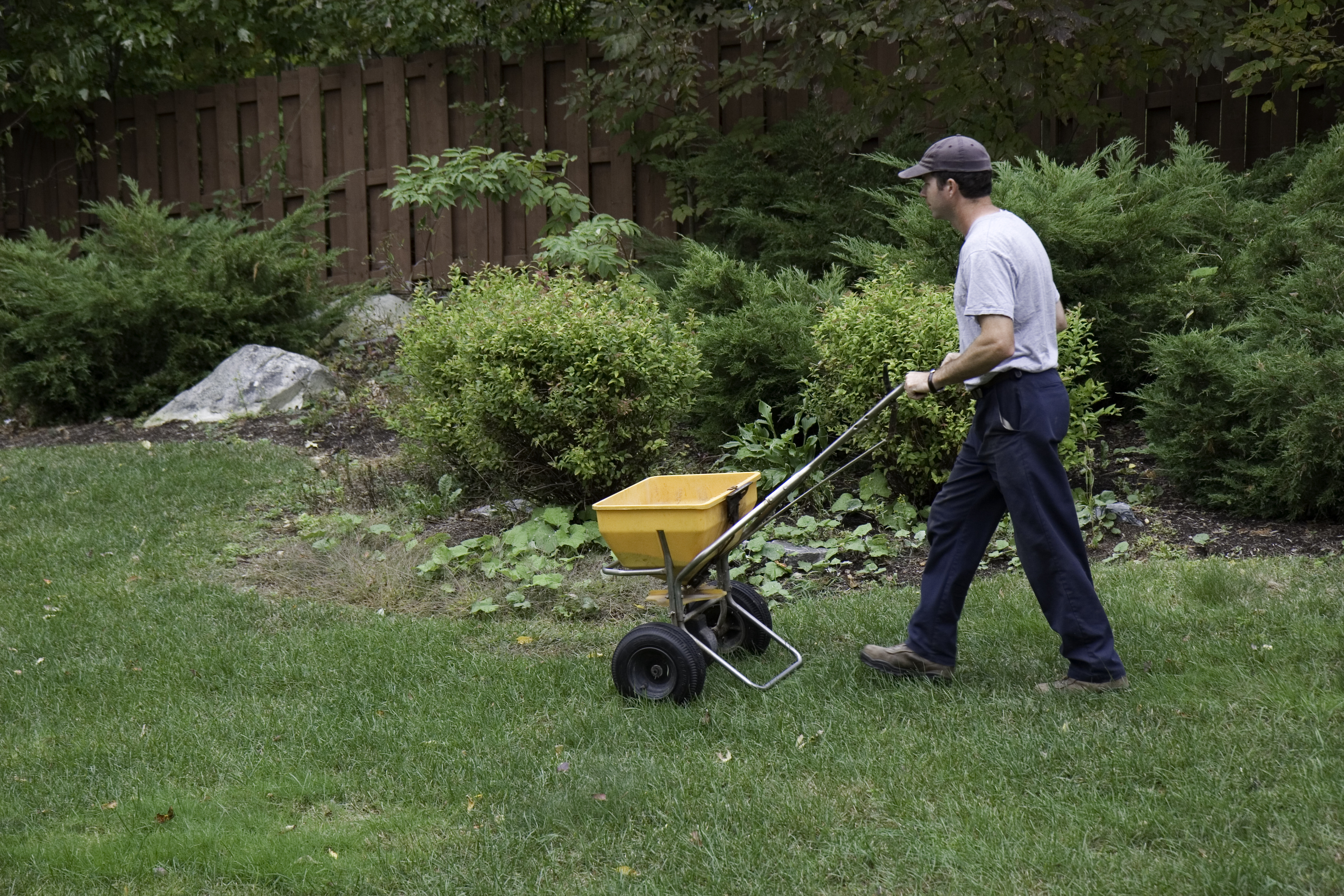
When it comes to drop spreaders versus broadcast spreaders, knowing the differences between them will help you make the right choice for your outdoor setup.

When your grass keeps dying where a tree used to be, it’s likely because there is a nutrient deficit in the soil in that area. Here’s how to fix it.